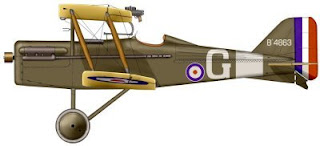In the wake of the Battle of the Marne—during which Allied troops halted the steady German push through Belgium and France that had proceeded over the first month of World War I—a conflict both sides had expected to be short and decisive turns longer and bloodier, as Allied and German forces begin digging the first trenches on the Western Front on September 15, 1914.
The trench system on the Western Front in World War I—fixed from the winter of 1914 to the spring of 1918—eventually stretched from the North Sea coast of Belgium southward through France, with a bulge outwards to contain the much-contested Ypres salient. Running in front of such French towns as Soissons, Reims, Verdun, St. Mihiel and Nancy, the system finally reached its southernmost point in Alsace, at the Swiss border. In total the trenches built during World War I, laid end-to-end, would stretch some 25,000 miles—12,000 of those miles occupied by the Allies, and the rest by the Central Powers.








As historian Paul Fussell describes it, there were usually three lines of trenches: a front-line trench located 50 yards to a mile from its enemy counterpart, guarded by tangled lines of barbed wire; a support trench line several hundred yards back; and a reserve line several hundred yards behind that. A well-built trench did not run straight for any distance, as that would invite the danger of enfilade, or sweeping fire, along a long stretch of the line; instead it zigzagged every few yards. There were three different types of trenches: firing trenches, lined on the side facing the enemy by steps where defending soldiers would stand to fire machine guns and throw grenades at the advancing offense; communication trenches; and “saps,” shallower positions that extended into no-man’s-land and afforded spots for observation posts, grenade-throwing and machine gun-firing.









While war in the trenches during World War I is described in horrific, apocalyptic terms—the mud, the stench of rotting bodies, the enormous rats—the reality was that the trench system protected the soldiers to a large extent from the worst effects of modern firepower, used for the first time during that conflict. The greatest danger came during the periods when the war became more mobile, when the soldiers on either side left the trenches to go on the offensive. German losses per month peaked when they went on the attack: in 1914 in Belgium and France, 1915 on the Eastern Front, and 1918 again in the west; for the French, casualties peaked in September 1914, when they risked everything to halt the German advance at the Marne. Trench warfare redefined battle in the modern age, making artillery into the key weapon. Thus the fundamental challenge on both sides of the line became how to produce enough munitions, keep the troops supplied with these munitions and expend enough of them during an offensive to sufficiently damage the enemy lines before beginning an infantry advance.

- Trenches generally formed a zigzag pattern to help protect the trench against enemy attack.
- Fire steps and scaling ladders enabled troops to go ‘over the top’, i.e. to go out into no-man's-land (the area between the opposing armies) to attack enemy trenches.
- Machine guns, one of the most deadly weapons, could fire 400–500 bullets/minute.
- Trench toilets, called latrines, were usually pits 1.5 metres deep, dug at the end of a short gangway. Each company had two sanitary personnel who had to keep the latrines in good condition.
- Earth-filled sandbags helped to shore up the edges of the trenches and absorb bullets and shell fragments.
- Duckboards were wooden planks placed across the bottom of trenches and other muddy ground. They helped protect men from trench foot and from sinking deep into the mud. Trench foot was a painful and dangerous condition resulting from days spent standing in freezing water and muddy trenches; gangrene could set in and result in the amputation of a man's foot.
- Owing to the use of mustard gas and other chemical weapons, all soldiers needed gas masks. Mustard gas was almost odourless and took 12 hours to take effect.
- Each soldier had a kit containing nearly 30 kilograms of equipment. This included a rifle, two grenades, ammunition, a steel helmet, wire cutters, a field dressing, a spade, a heavy coat, two sandbags, a ground sheet, a water bottle, a haversack, a mess tin, a towel, a shaving kit, socks and rations of preserved food.
- Barbed wire helped protect the trenches and also made it very difficult to attack the opposing trench. Before an attack, soldiers went out at night to cut sections of wire to make it easier for the soldiers in morning raids. Minor cuts and grazes caused by the barbed wire often became infected in the unsanitary conditions of the trenches.
- The British army employed 300 000 field workers to cook and supply the food for troops. However, there was often not enough food to cook. The main diet in the trenches was bully beef (canned corned beef), bread and biscuits.
- Snow, rain and freezing temperatures drastically slowed combat during the winter months. In hot, dry summers, lack of fresh water, scorching sun, and the stench of dead bodies and rubbish made trench life equally difficult.
































































